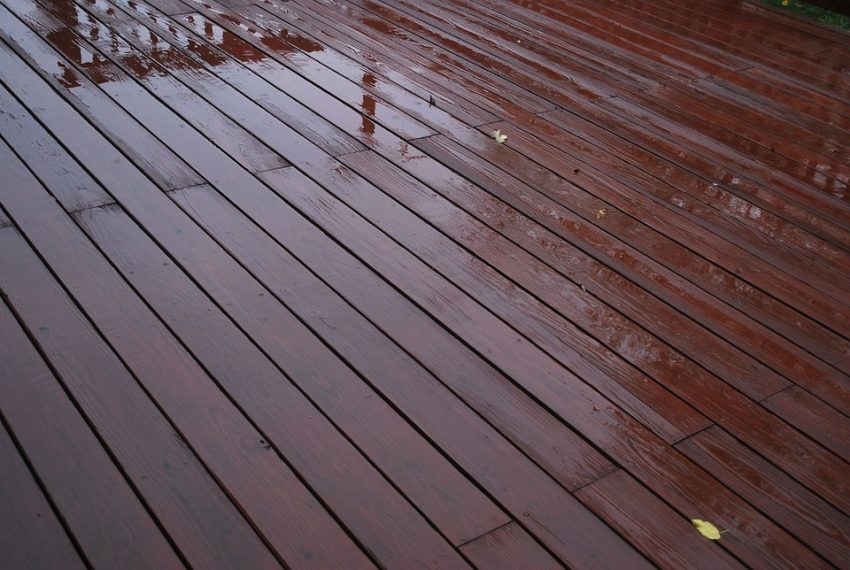Deck Sanding 101: Why, How, and When to Do It?

A well-maintained deck can significantly enhance the aesthetic appeal of your home and extend its lifespan, making deck sanding an essential floor maintenance activity. Over time, everyday use and exposure to the elements can leave your deck looking worn and weathered, potentially leading to more severe issues such as wood decay and splintering. Regular sanding helps mitigate these issues by removing the old, damaged layer of wood, revealing a fresher, more vibrant surface underneath.
Below, we have created a comprehensive guide on the most important aspects of deck sanding in Sydney or anywhere else. Learn why it’s necessary, how to do it effectively, and the best times to undertake this task.
Why Sand Your Deck?
- Restoration: Sanding removes the wood’s top layer, which may have become grey, scratched, weathered, and rough. It unveils the fresher wood beneath, restoring the deck’s original appearance and colour.
- Preparation for Sealing: Sanding smooths the surface, which is essential before applying sealant or stain. A smooth deck absorbs the finish evenly, enhancing protection and aesthetics.
- Safety: Over time, deck surfaces can develop splinters, which are hazardous, especially for homes with children or pets. Therefore, sanding makes your deck safer by eliminating rough edges.
- Enhanced Lifespan: Regular sanding as part of your deck’s maintenance routine can prevent decay caused by moisture and environmental wear, thus prolonging its lifespan.
How to Sand Your Deck?
- Choosing the Right Tools: For most decks, using a power sander is the most efficient option. You can use an orbital sander for small areas or a floor sander for larger decks. Moreover, it is essential to ensure you have the correct grit sandpaper. Typically, it is best to start with a coarser grit and progress to a finer grit.
- Preparation: Before sanding, it is necessary to clear the deck of furniture and other items. Moreover, you will need to check for any loose boards or protruding nails that need to be fixed. Finally, cleaning the deck to remove dirt and debris will ensure the sanding is effective.
- Sanding Process: It is important to begin the sanding process in line with the wood grain to avoid scratches that go against the grain. In addition, it is usually necessary to start with coarse sandpaper to remove the rougher flaws and old finish, then progress to finer grits for a smooth finish.
- Cleaning Up: After sanding, it is recommended to thoroughly sweep or vacuum the deck to remove all sawdust. This step is crucial as sawdust can interfere with the application of stains or sealers.
- Sealing or Staining: Once your deck is sanded and clean, you can apply a sealer or stain to protect the wood from moisture and UV damage. This not only extends the life of your deck, but also enhances its appearance.
When to Sand Your Deck?
- Frequency: Generally, sanding your deck every 1-2 years is advisable, depending on the level of exposure to elements and foot traffic.
- Best Time of Year: The ideal time to sand and treat your deck is during dry weather. Late spring or early fall usually offers the best conditions, as moderate temperatures and low humidity help the sealant or stain cure properly.
- Signs It’s Time: Look for signs like discoloration, splintering, and rough texture. These signs indicate that your deck could benefit from sanding.
Safety Measures
While sanding your deck, it is necessary to wear appropriate safety gear such as goggles, a dust mask, and ear protection, especially when using power tools. Furthermore, it is essential to ensure the area is well-ventilated to avoid inhalation of sawdust.
Pro Tips
- Always move the sander steadily to avoid gouges in the wood.
- For decks with intricate designs or hard-to-reach areas, hand sanding might be necessary to achieve uniform smoothness.
- If you’re unsure about the correct type of sander or sandpaper, it is best to consult with a professional at your local hardware store.
Summary
Sanding is a pivotal step in deck maintenance that should not be overlooked. By following proper techniques and timing, you can ensure your deck remains a safe, enjoyable, and beautiful part of your home. After all, a little effort goes a long way in preserving the value and appeal of your outdoor living space. Whether you decide to DIY or hire a professional, keeping your deck sanded and sealed is a wise investment in your home’s future.




Leave a Reply